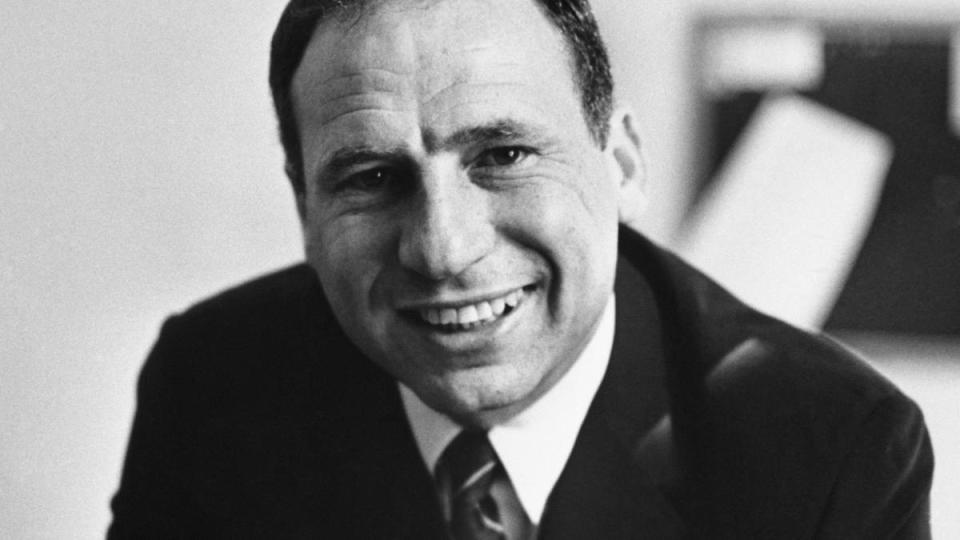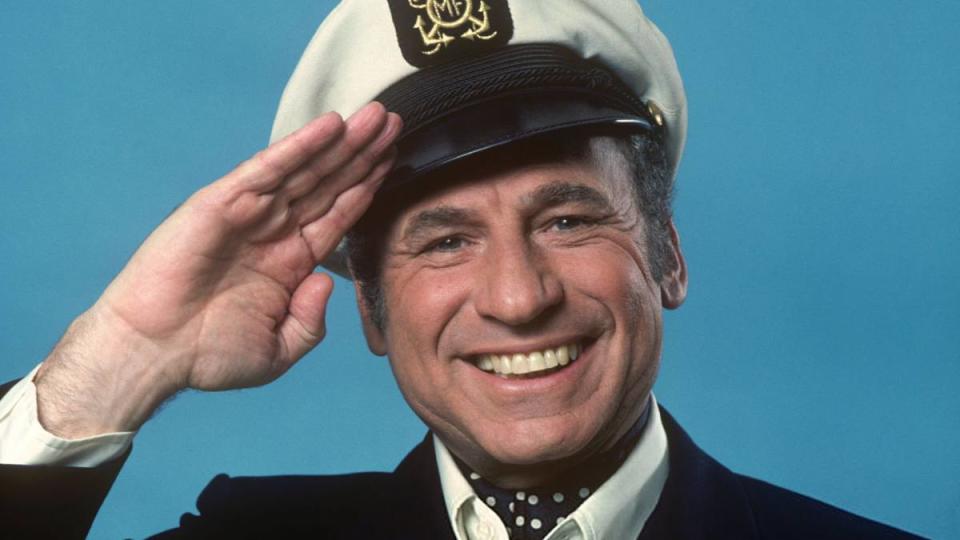Mel Brooks Movies: 27 Surprising Behind-the-Scenes Facts
Mel Brooks movies have a cult following and for good reason. Brooks is a comedic genius and master of parody and he has left a mark on the world of cinema with his unique brand of humor. From his early days in the entertainment industry to his iconic films, Brooks has consistently delighted audiences with his irreverent, satirical take on various genres.
Mel Brooks is a director, producer, writer and actor — he is one of the few entertainers in an elite group to earn all four major entertainment prizes: the Emmy, the Grammy, the Oscar, and the Tony, also known as the EGOT.
His career began in television writing for the TV series Get Smart in 1965. He quickly moved on to films and won the Oscar for Best Original Screenplay for his first feature, The Producers in 1967. He is no stranger to winning awards and was even presented with the National Medal of Arts by President Obama in 2016.
Here we look back at Mel Brooks movies and shows and include behind-the-scenes facts from Brooks’ tell-all 2022 memoir, All About Me: My Remarkable Life in Show Business.
1. Get Smart (1965)

For Brooks, the magic started in 1965 when he worked with Buck Henry to create Get Smart, a television series parodying the secret agent genre that was popular at the time. The show starred Don Adams (who was also a director on the series) as agent Maxwell Smart (otherwise known as Agent 86), Barbara Feldon as Agent 99, and Edward Platt as The Chief.
4 Surprising Behind-the-Scene Facts:
In his memoir, Brooks said ABC passed on Get Smart. NBC was smart enough not to do the same.
It took Brooks about three and a half months to write the pilot script. “We could have done it in a couple of weeks, but we loved playing pool,” Brooks said.
“I knew I was going to name the main character Max [Maxwell Smart], because at that point I had named all of my main characters Max," said Brooks. "The Producers had Max Bialystock. My father’s name was Max, his grandfather’s name was Max, and later I named my youngest son Max.”
Brooks said, "I came up with using the number 86 because when I worked as a busboy whenever we were out of anything that was ordered, somebody in the kitchen would yell, 'Eighty-six on the rye bread; eighty-six on the cream cheese, and eighty-six pickled herring.' It meant we were out of it."
2. The Producers (1967)

Mel Brooks made his directorial debut with The Producers in 1967, a groundbreaking comedy that would later be adapted into a successful Broadway musical. The film stars Zero Mostel as Max Bialystock, a down-and-out Broadway producer, and Gene Wilder as Leo Bloom, an anxious accountant. The duo concocts a scheme to produce a surefire Broadway flop, intending to pocket the excess funds raised. However, their production, Springtime for Hitler, unexpectedly becomes a hit.
3 Surprising Behind-the-Scene Facts:
The Producers won an Academy Award for Best Original Screenplay, solidifying Mel Brooks as a force to be reckoned with in the world of comedy.
The Producers was originally called Springtime for Hitler but no studio would go near it, so they needed to change the name.
In his memoir, Brooks said, "I had worked for close to two years on both The Producers and The Twelve Chairs and only made fifty thousand dollars for each film to write, direct and act. I had my doubts about making a living in the movie business. I still hadn’t had a real commercial hit. The Producers and The Twelve Chairs together didn’t make me enough money to buy a new car.”
3. Blazing Saddles (1974)

In 1974, Brooks took aim at the Western genre with Blazing Saddles. Starring Cleavon Little as the black sheriff, Bart and Gene Wilder as the Waco Kid, the film is a satirical take on racial stereotypes and the classic cowboy story. When the corrupt politician Hedley Lamarr, played by Harvey Korman, seeks to take over the town of Rock Ridge, Bart must navigate the challenges of being a black lawman in a predominantly white community.
3 Surprising Behind-the-Scene Facts:
Blazing Saddles pushed the boundaries of comedy by incorporating meta-humor, breaking the fourth wall, and addressing racism in a way that was bold and unconventional for its time.
Said Brooks, "Since this story was about a Black sheriff in a white Western town, I knew I needed Richard Pryor to be one of the writers. He was a friend and a brilliant comedian who hadn’t really broken out yet. Richard was not only a gifted writer, but in my opinion there was no better stand-up comic that ever lived. Comics could be either wine or water, and Richard was a fine wine.
"If you want a comedy to last, there’s a secret you must follow: You have to have an engine driving it," Brooks explained in his memoir. "In Blazing Saddles, there’s a very serious backstory. Racial prejudice is the engine that really drives the film and helps to make it work."
4. Young Frankenstein (1974)

Released in the same year as Blazing Saddles, the film Young Frankenstein is a homage to the classic horror films. Gene Wilder stars as Dr. Frederick Frankenstein, the grandson of the infamous Victor Frankenstein. When Frederick inherits his family's estate in Transylvania, he discovers his grandfather's notes on reanimating the dead and decides to follow in his footsteps.
4 Surprising Behind-the-Scene Facts:
Mel Brooks collaborated with Gene Wilder on the screenplay for Young Frankenstein, and the film's meticulous attention to recreating the atmosphere of the original Frankenstein films earned it critical acclaim.
Peter Boyle and Marty Feldman co-starred in the movie, because Gene Wilder’s agent also repped those two stars. It’s as simple as that.
Gene Wilder used to play tennis every Saturday with Gene Hackman. That’s how Hackman became part of the movie.
Originally Brooks approached Columbia Pictures with Young Frankenstein. “They were tough on the budget, and when I told them I wanted to shoot it in black and white they went crazy and said, ‘Never!’ We then took it to Alan Ladd, Jr., at Twentieth Century Fox. The rest is history."
Related: Paul Newman Movies: 19 Rare Photos of The Screen Idol’s 50-Year Career
5. Silent Movie (1976)

This film is a tribute to the silent film era and follows a failing Hollywood director (played by Brooks) attempting to revive his career by creating the first silent movie in forty years. The movie is filled with cameos from Hollywood stars of the time, including Burt Reynolds, James Caan, and Liza Minnelli.
3 Surprising Behind-the-Scene Facts:
Despite being a silent film, the movie features one spoken word, and that word is spoken by Marcel Marceau, the famous French mime.
Brooks loved silent films at a young age. He said, "When I was a little kid, my older brothers would take me to see Charlie Chaplin, Buster Keaton, and Harold Lloyd in those zany slapstick silent movies. They would have to drag me home. I loved them so much I wouldn’t leave the theater."
Brooks was excited to have Burt Reynolds play a role. When he talked to Reynolds about the part Brooks proposed a few things, but Reynolds cut him off and said, “Why don’t I play myself? A big egotistical movie star!” Brooks loved the idea.
6. High Anxiety (1977)

In High Anxiety, Mel Brooks takes on the thriller genre, specifically paying homage to Alfred Hitchcock. Released in 1977, the film stars Brooks as Dr. Richard Thorndyke, a psychiatrist who becomes embroiled in a conspiracy while taking over as the head of the Psycho-Neurotic Institute for the Very, Very Nervous.
2 Surprising Behind-the-Scene Facts:
High Anxiety features a scene where Brooks' character is trapped in a shower, directly parodying the iconic shower scene from Hitchcock's Psycho. The scene was shot with the cooperation of Janet Leigh, who reprised her role as Marion Crane.
Brooks became good friends with Hitchcock during the making of this movie. He said, “Before we started filming, I had watched every Hitchcock film over and over again.”
7. History of the World, Part 1 (1981)

The movie History of the World, Part 1 is a raucous comedy that spans various historical periods, poking fun at events and figures from the dawn of man to the French Revolution. Brooks stars in multiple roles, creating a satirical tapestry that lampoons history with his trademark irreverence.
2 Surprising Behind-the-Scene Facts:
Brooks knew there was only one person to play the narrator. In his memoir, he says, "There was simply no voice as majestic, that would resonate so thrillingly, like the voice of Orson Welles. I knew that words emanating from his mouth would immediately lend stature to the narration." When Welles read the narration, he said, “It’s wonderful, count me in.”
Brooks paid Welles a fee of twenty-five thousand dollars in cash, put in a paper bag. When asked what he was going to do with the money Welles said, “I am going to spend it all on fine Cuban cigars and the best Beluga caviar.”
8. Spaceballs (1987)

Spaceballs is one of those movies that catapulted Mel Brooks into the realm of science fiction parody, taking aim at the Star Wars franchise in particular. Released in 1987, the film follows Lone Starr (Bill Pullman) and his half-man, half-dog companion Barf (John Candy) as they attempt to rescue Princess Vespa (Daphne Zuniga) from the evil Dark Helmet (Rick Moranis).
3 Surprising Behind-the-Scene Facts:
The character Yogurt, played by Mel Brooks, is a parody of Yoda from Star Wars. In one memorable scene, Yogurt reveals the secret of merchandising, poking fun at the extensive marketing and merchandise associated with successful film franchises.
Brooks did Spaceballs because his son Max loved the Star Wars movies.
Spaceballs went on to become one of the biggest hits in the Mel Brooks cinematic universe. He said, "I think I’ve autographed more Spaceballs posters than for any other Mel Brooks film. I’ve even gotten some letters from young fans that saw Spaceballs before they saw Star Wars. They would often ask me why Star Wars wasn’t so funny."
9. Robin Hood: Men in Tights (1993)

In one of our favorite Mel Brooks movies, Robin Hood: Men in Tights, he takes a comedic look on the classic Robin Hood legend. Released in 1993, the film stars Cary Elwes as Robin Hood and satirizes not only the legendary outlaw but also other cinematic interpretations of the character.
3 Surprising Behind-the-Scene Facts:
While the film lampoons various Robin Hood movies, it also references Brooks' own work, featuring a character named Rabbi Tuckman, a nod to the character Rabbi Twerski in Blazing Saddles.
Not many people know this, but Robin Hood: Men in Tights was not the first time I had fun with the legend of Robin Hood. In the mid-seventies, I did a half hour turned it into a half-hour television comedy called When Things Were Rotten. Dick Gautier played Robin Hood.
I looked everywhere for a good sidekick for Robin Hood. I saw forty or fifty different people for the role of Ahchoo, and none of them really clicked. And then there was this skinny little kid. He came up and began reading the lines in a very simple and funny way. His name was Dave Chappelle and he was relatively unknown.
For more classic stars, keep reading…
Bob Newhart: A Look at the Comedy Legend’s Life, Love and Legacy of Laughter
Rita Moreno: 10 Rare Photos of the Trailblazing Star’s Life and 70-year Career
Dick Van Dyke Movies and TV Shows: The Legendary Entertainer’s Most Lovable Roles
